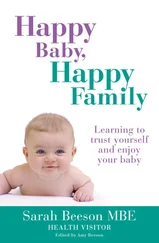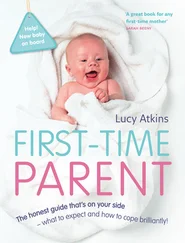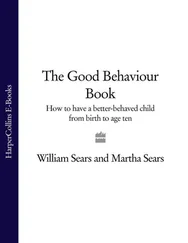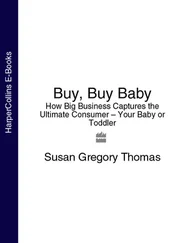As a retired kindergarten teacher with over 25 years of experience, I know that many gaps in learning can be prevented if children are subjected to brief, stimulating and challenging experiences at the appropriate age and developmental level. Basic concepts are more difficult for children to learn in school because they may have experienced lags in developmental learning at home.
Read through an entire weekly activity that is appropriate for the age of the child, remembering safety first.
Make certain that you understand the intended purpose of the activity.
Collect and assemble the necessary materials.
Decide how you plan to implement the activity.
Administer an activity when the child appears to be ready. It may not be at the same time each day.
Avoid too much structure but be consistent. Just doing an activity every now and then may prove to be ineffective.
Review the brief evaluation of each activity and evaluate the child’s progress.
Remember, a child begins at birth with an almost non-existent attention span that gradually expands to approximately 15 seconds during the first few months. Subsequently, the period of attention slowly increases. By age four, the child may still only be able to engage in an activity for a brief time. It depends on the child. With guidance and patience a child’s attention span can be increased.
Repeat the same weekly activity or repeat previously suggested activities throughout a given week. Repetition is very important.
Stop an activity when the child appears disinterested, frustrated or inattentive. Record this activity and try it again later. Feel free to alter the suggestions to meet the needs of the child.
Avoid introducing activities too soon. Pace the activities slowly and steadily.
Subsequent to doing an activity, refer to the measurable parameters checklist in the back of this book and have a pencil and paper ready to make notes of any observations, additions or comments regarding the activity and the child’s responses.
MEASURABLE PARAMETERS TO PROFILE CHILD DEVELOPMENTis a valuable checklist guide to help you determine the progress of a child from birth to age five through observations using a scoring system. It parallels skills addressed in the book and helps prevent the overlooking of skills that should be developed. This guide is divided into yearly segments—the first year contains two six-month checklist periods—and indicates whether a child’s progress is satisfactory or delayed and when a child is ready for school. Evaluation of a child should allow for different growth patterns and different personalities and needs.Young children learn through different play experiences and learn best when one concept (idea) at a time is presented. Children need to be guided with love, patience and praise and need to do activities that best suit their needs at their developmental level so they can succeed more often than fail.
Educators are beginning to believe that earlyand consistent stimulation is very important in a child’s development.Your baby will mature eventually and be able to accomplish the suggested basic skill activities presented here in this book. However, if your baby appears to be unresponsive to (not ready for) the activities suggested, try again each day. Be consistent and be aware that babies are not time clocks. They develop at different rates and not necessarily in the same areas at the same age.
On the other hand, your baby may show signs of being responsive to (ready for) the skill activities at an earlier time than those suggested. Introducing skill activities that are a little more advanced is fine, but going too far ahead may not be the best thing for your baby. By going too far ahead, your baby may miss basic skills that would be a foundation for future developmental activities.
Research has confirmed that babies are born with billions of brain cells, many more than they have at age three and nearly twice as many as they have as adults.
Nurturing basic home skills at the right time is essential to maximise a child’s learning potential. In other words, they either ‘use it or lose it’.
Think of a child’s brain as a computer. It organises and stores information.
Repeating activities is very advantageous. The more a baby repeats an activity, the more secure and responsive he will be. This is the baby’s foundation for learning. It is called rote learning. An infant’s thinking, reasoning and association processes are very immature. Rote learning will help develop these abilities to their fullest potential.
The developmental skill activities in this section are designed to help develop thinking, reasoning and association. The key to a baby’s learning is introducing and developing skills at the right time. A gap in the learning and development of an infant is what educators believe causes many learning and behaviour problems at home and at school. That optimum time is of the utmost importance. The child should be nurtured with love, gentleness and consistency. The recommended activities should be administered at appropriate times throughout the day. A set time is too regimented and may cause anxiety for mother, infant or both. The way a mother interacts with her child is very important. Good voice inflection with praise, consistency without pressure, and gentleness and love will enable your child to grow with a positive attitude toward himself and his environment.
Observe the baby’s head movements.Is the head wobbly? Support it when the baby is not in a reclining position. Support the head with a collar, blanket, hand, lap or cradled arm. Does the baby turn his head from side to side? If not, gently turn the baby’s head while he is in a reclining position. This helps the baby to become aware of both sides of his head.
Observe the baby’s hand movements. Does the baby have a strong grasp? Let the baby grab and hold your finger. The baby is beginning to react to other people by feeling. The grasp is a prenatal reflex and will weaken as the baby’s eye-hand coordination develops. When you are playing with or holding the baby put his left and right palms together. This helps to develop a feeling and awareness of both sides of his body.
Observe the baby’s arm movements. Straighten the baby’s left arm and note the baby’s reaction. Straighten the baby’s right arm and note the baby’s reaction.
Observe the baby’s legs. Straighten the left leg and note the baby’s reaction. Straighten the right leg and note the baby’s reaction.
Observe the baby’s foot movements. Touch and hold the baby’s left foot and note the baby’s reaction. Touch and hold the baby’s right foot and note the baby’s reaction.
This week’s activity is primarily for the observation of your baby’s movements and reactions. By touching the baby’s body parts you are giving the baby his first awareness of his body through the sense of touch.
Wrap the baby securely in a blanket during the first weeks of life. For nine months the baby has been curled up. This makes a baby of this age feel secure. It is like a cocoon.
As you exercise your baby’s body parts throughout the first few weeks, you will notice that the baby will stretch his arms and legs as he adjusts to his new environment. The secure blanket wrapping will not be as necessary.
Talk to your baby. Use brief phrases that reflect your personality. Sing or hum to your baby. If you prefer not to sing or hum, use a music box or a tape recorder and play soft lullabies. This stimulates your baby’s sense of hearing.
Читать дальше












